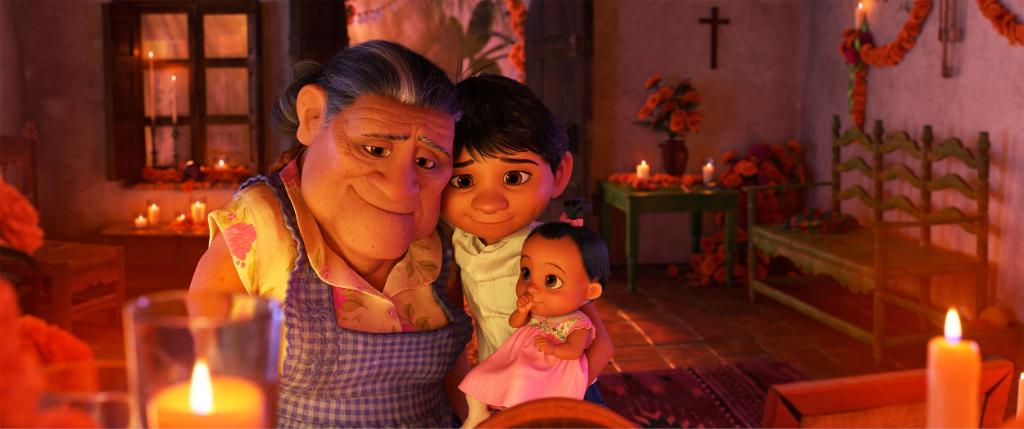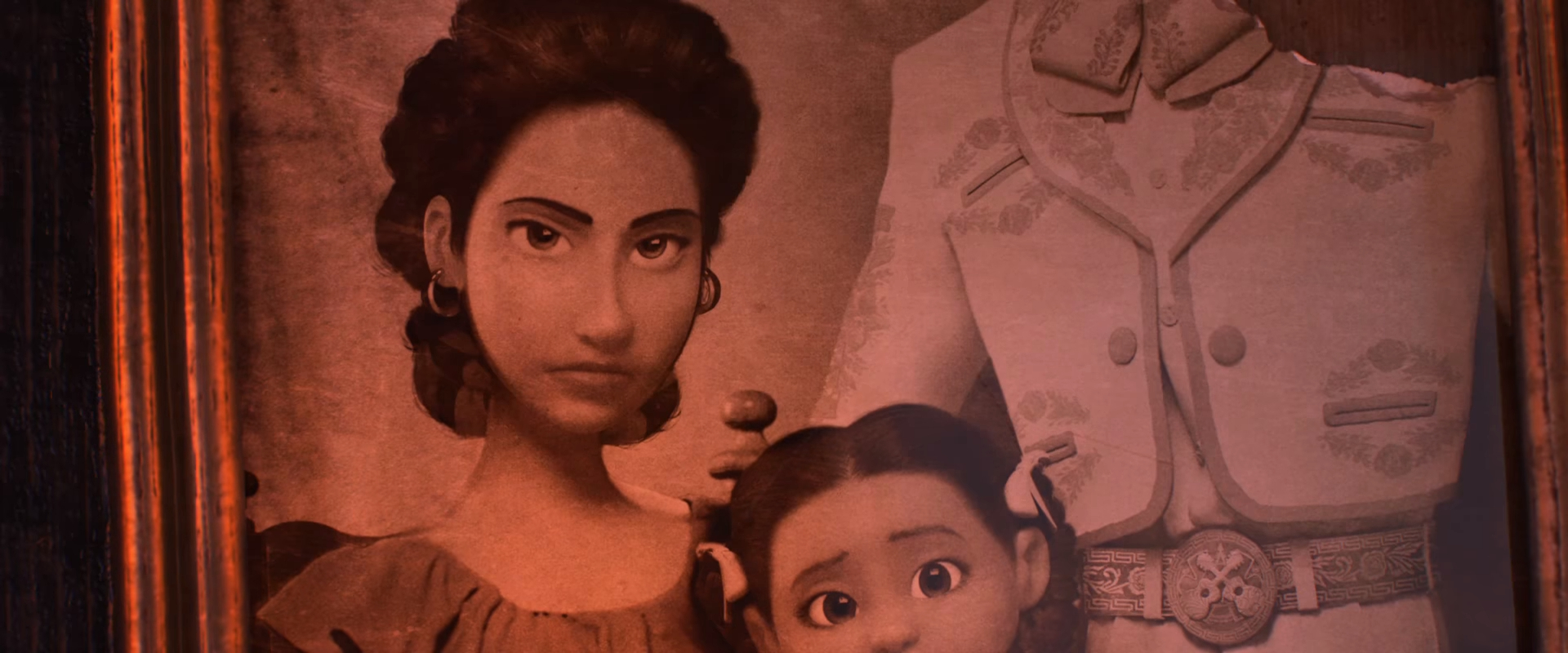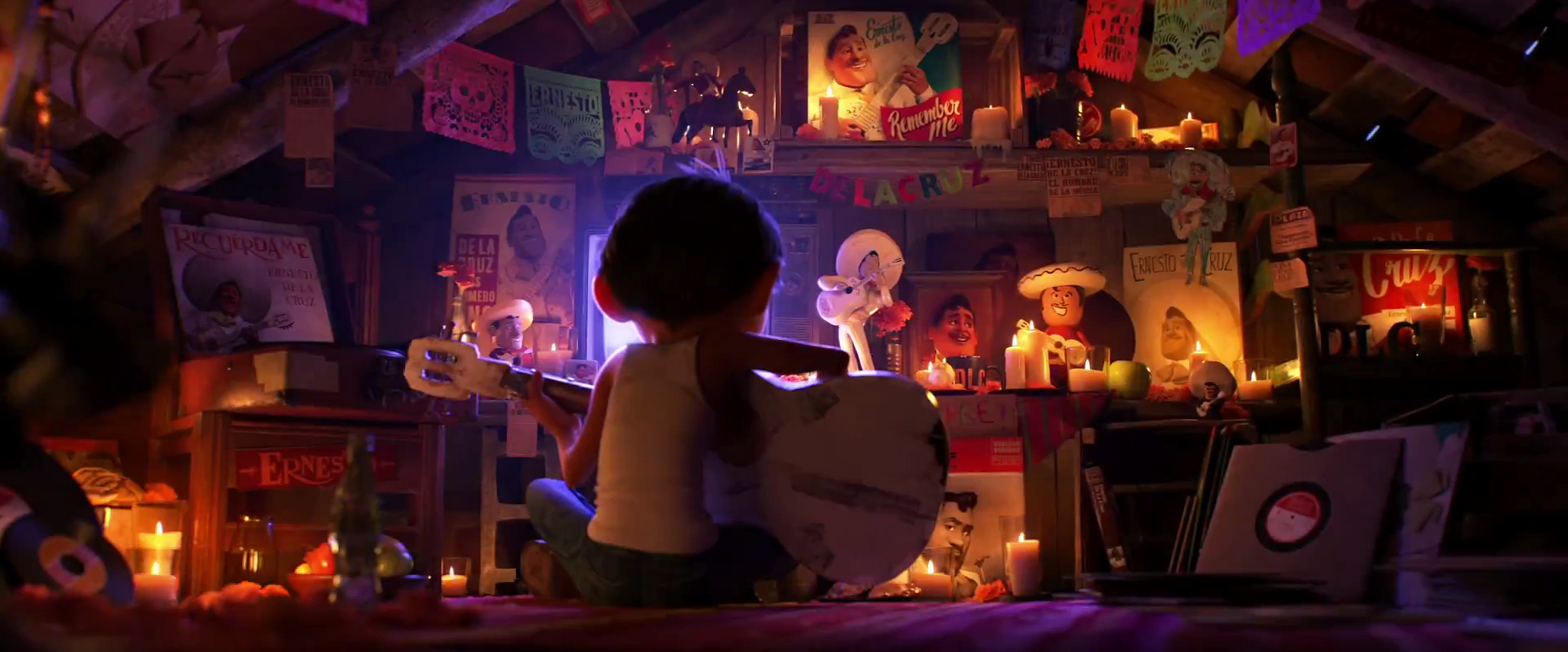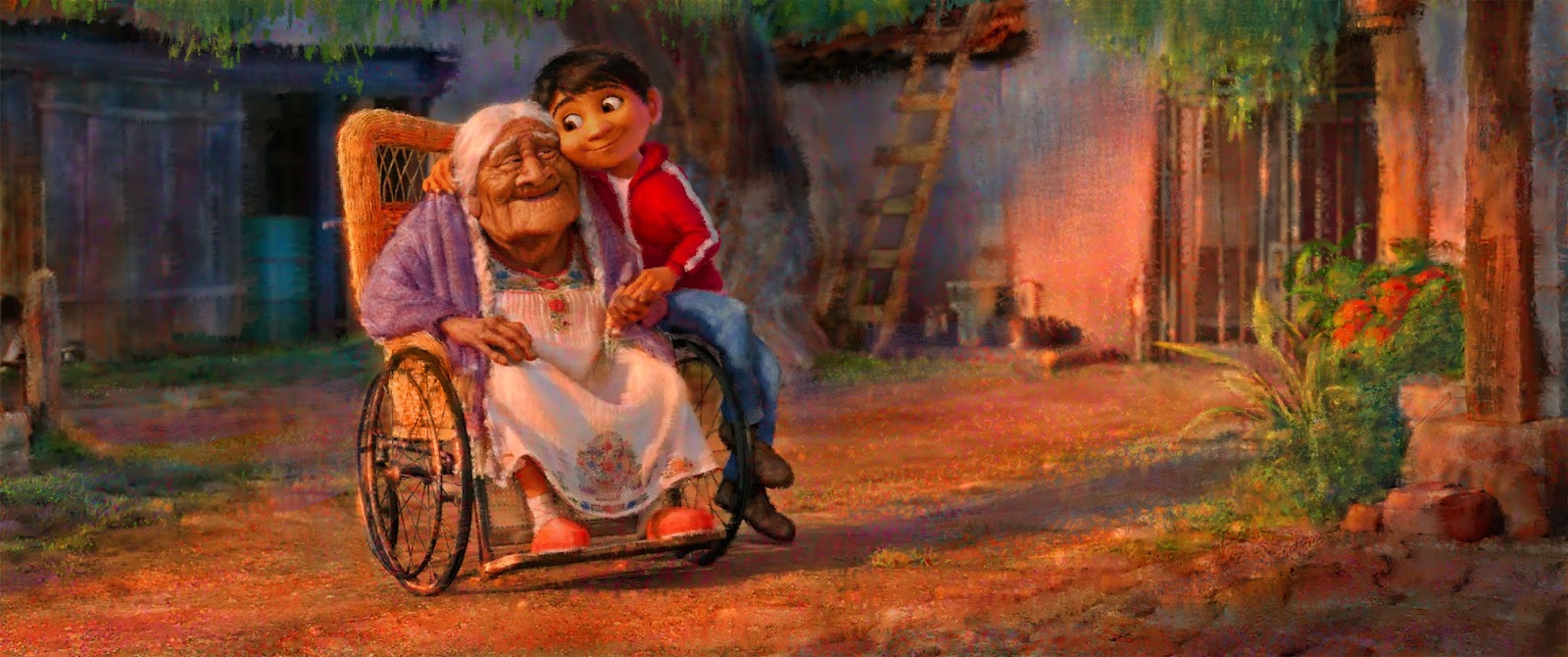There are slight spoilers below.
One of the things I love best about Coco is the strong female presence in the film. Although it’s a buddy movie with two male characters, women are vital in this particular story. They don’t only exist as peripheral characters either. Miguel’s journey to the Land of the Dead, where he learns the truth of his family history, involves three women of his family in very distinct ways.
Mama Imelda
She is the first character we meet, besides Miguel. He narrates the story. Mama Imelda was Miguel’s great-great grandmother. She banned music in the Rivera household, which has been in effect for generations. Miguel is the first in the Rivera line since his great-great grandfather to love and play music (in secret of course). As the young boy explains, his great-great grandfather walked out on his wife and daughter to pursue a music career. Rightfully livid, Mama Imelda banned music forever. Because of her husband’s betrayal, the Rivera descendants believe music is a curse.
We also learn from Miguel that Mama Imelda didn’t feel sorry for herself. She got to work instead. With a young daughter to support on her own, she learned to make shoes. It’s a skill she passed down to her daughter Coco, and when Coco married, her husband joined the family business too. In present day Mexico, the Riveras have continued the shoemaking tradition and operate Mama Imelda’s shop. Miguel is just expected to become a shoemaker, though he harbors musical aspirations.
It’s natural that Miguel doesn’t care about making shoes, but he takes the family business and his great-great grandmother for granted. Note that Imelda didn’t just find work; she actually started her own business. She also never remarried. In just a few minutes, her strength, resiliency, and independence are firmly established. I have to believe the filmmakers were deliberate with these insights into her character.
When Miguel comes face to face with Mama Imelda in the Land of the Dead, she’s severe and not to be trifled with. The audience is aware of this too immediately because she is berating a terrified office worker and wallops the woman’s computer with her shoe. It’s also fitting that Mama Imelda’s alibrije, Pepita, is a ferocious and stunning creature. Pepita is another version of Imelda; grand in size with massive wings and penetrating eyes. But Pepita has a tender and loving side like her human counterpart.
Later on, Miguel learns that Mama Imelda was a great music lover. She reveals a beautiful singing voice. She tells Miguel that she and her husband would sing while he played his guitar, and the memories light up her face with a fond smile. But the smile disappears. She and her husband had different priorities. Everything changed for her when Coco was born. “I wanted to put down roots. He wanted to play for the world.”
The severity of Mama Imelda melts away – all her pain and heartache and vulnerability are laid bare. None of that diminishes her incredible strength however. Something else I find striking about this exchange is that Mama Imelda is telling her story in her own words. Before, we had to rely on Miguel’s voice; now, Mama Imelda speaks with her own.
Abuelita

Now we return to the Land of the Living. Abuelita is Miguel’s grandmother and the head of the Rivera family. Abuelita’s house, Abuelita’s rules. As Alanna Ubach, who gave her voice to Mama Imelda says in this interview, in Latin households, the matriarchs are “the women that really bring the magical fairy dust to the entire family.” The most important rule in Abuelita’s house is absolutely no music ever. She honors Mama Imelda’s ban but takes it to another level. People singing outside the house are chased away. A bottle is snatched out of Miguel’s hands when he creates a simple rhythm by blowing into it. “NO MUSIC!”
Though she’s tough, domineering, and wants to protect her family from the music curse, Abuelita is defined by her great love. You only have to see how gentle she is with Mama Coco and the way she piles food onto Miguel’s plate.

There’s a moment in Coco that I find significant, and that is when Abuelita, frustrated by Miguel’s lack of interest in family traditions, looks to Mama Imelda’s photograph atop the ofrenda and asks, “What are we going to do with that boy?” It’s rhetorical, but she receives a solution anyway. I love this moment because Abuelita turns to the one person in the family tougher than she is, even though she isn’t there physically. But it highlights how important Mama Imelda still is to the family, and how the matriarchs are united in looking out for the Riveras.
Mama Coco

Miguel has a deep love and respect for his great grandmother. He treats her like a friend. Mama Coco has trouble remembering names and will sometimes call Miguel by the wrong one, but he says that it’s good to talk to her anyway. He tells her any and everything. Mama Coco is very old and frail, confined to a wheelchair, but Miguel welcomes her into his world with open arms. The world of a rambunctious 12 year old boy might seem foreign to an old woman, but the two of them just belong together. This shows what a good hearted kid he is, but it also lets the audience know that Mama Coco is still a cherished member of the family. In this film, a lot of reverence is afforded to the elderly. Also, grandmothers just make every story better.
Of course, Miguel’s close relationship with Mama Coco has even greater purpose. The film is named for her. She was the daughter left behind, and she never forgot her father. More importantly, she never stopped loving him. Mama Imelda wanted to forget him, wanted nothing to do with him in life or in death. But she was never the villain in this piece. Imelda and Abuelita after her were doing their best to protect Coco. In this film, it’s the love of women that covers a man’s mistake.
When Miguel sings “Remember Me” to his Mama Coco, her memory is recovered. It’s a tender moment between the two of them while the awestruck family looks on. Coco tells her story just as Mama Imelda did. The Riveras, stunned and joyful, listen in silence. How precious it is to hear family stories from our elders.
Mama Coco reminds me of the grandmother I never knew, who wore her hair in two long braids in the few photographs I’ve seen of her. Miguel is so lucky to have his Abuelita and Mama Coco, and to have met his Mama Imelda and learn her story firsthand. He set off on a quest to pursue a dream and follow in his great-great grandfather’s footsteps. But what he found was much greater. The history of the Rivera family is a song of women – proud, strong, and inspirational.
For a Latina perspective on the women and feminism of Coco, please read this article. Last modified: January 16, 2018







[…] to these kinds of stories, where elderly women/matriarchs rule the family. There’s a strong matriarchal presence in Pixar’s Coco. And in these stories, characters learn more about their ancestry and family line. Miguel actually […]